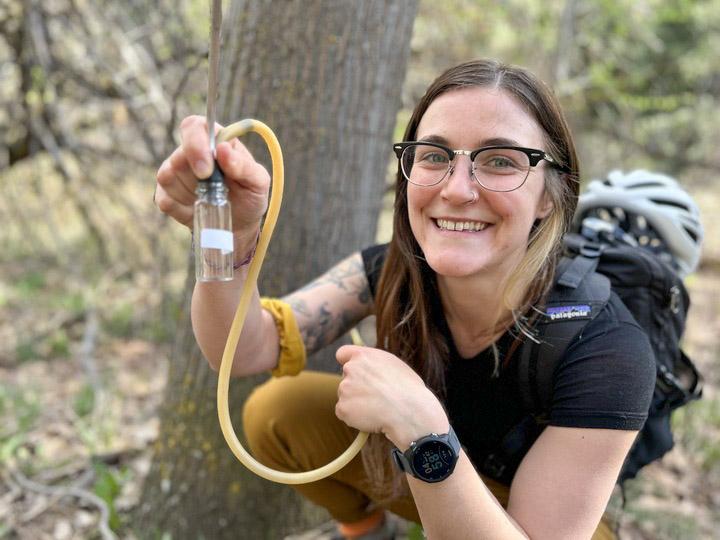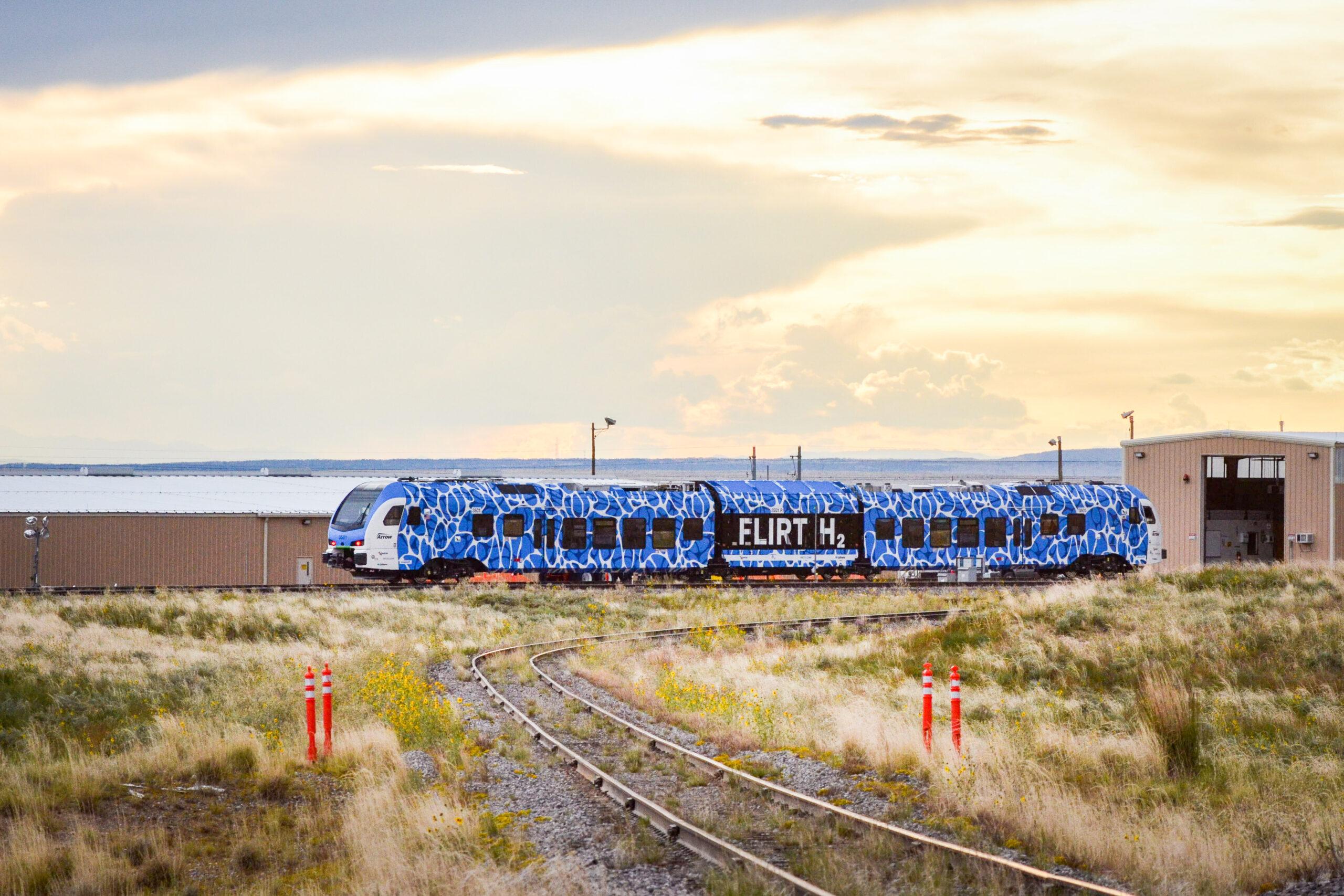
Thirty miles into the plains east of Pueblo, in a compound of squat brutalist buildings, some of Colorado’s top public officials gathered last week to take a ride into the future.
The setting was a federally run rail testing facility. The vehicle was a battery- and hydrogen-powered whisper-quiet train car on its way to California. The host was Gov. Jared Polis. The guests were county commissioners, Democratic legislators, and other elected officials the governor hopes to count on to support his push to build a passenger rail line from Pueblo to Fort Collins.
“I’ve got to kick this thing into high gear,” Polis said with a smile as he made his way to the front cab.
The train car smoothly glided down the tracks on a 13.5-mile loop around the facility.
“We’re going about 55 miles an hour right now,” Polis gleefully said into an intercom, repeating his announcements as the speed crept into the 70s.
Satisfied, Polis made his way back to his guests in the train car — and quickly learned its intercom wasn’t yet functional.
Undeterred, Polis shouted to the crowd: “Eighty miles an hour! This is 80 miles an hour, everybody.”
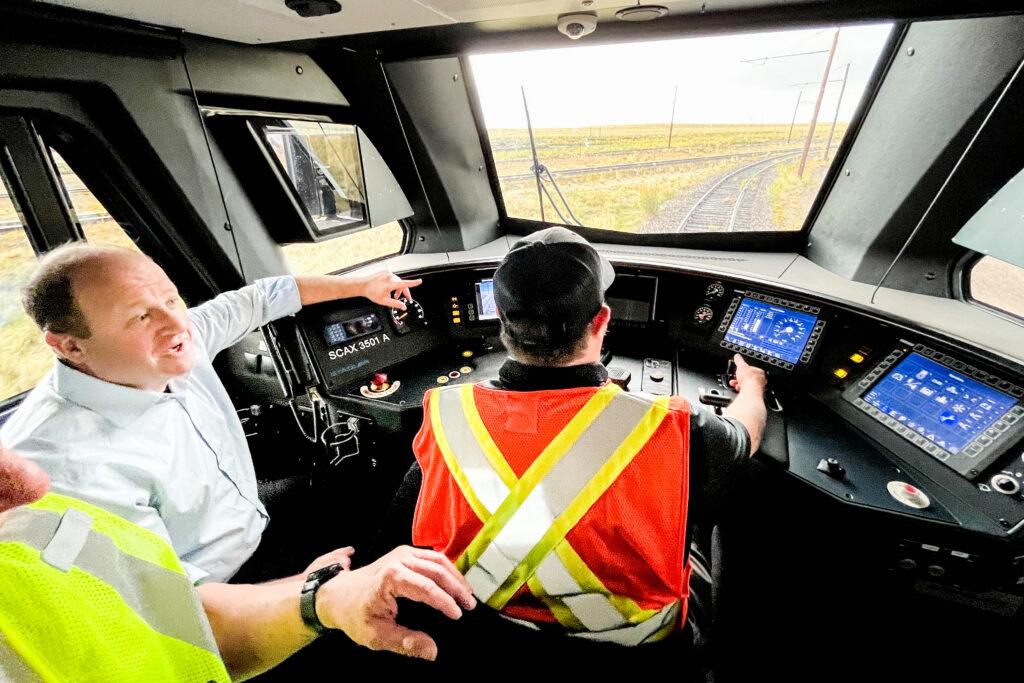
The train car was abuzz with excitement.
Passenger rail service along the Front Range has been studied and dreamed of for more than a decade. But the September event — not in a council chamber or the state Capitol, but rather in a state-of-the-art train car — made it feel a lot more imminent, some of the local officials on board said.
“I’m touching it, I’m feeling it, I’m seeing it,” said Rep. Tisha Mauro, D-Pueblo. “This can happen. It’s great.”
“It’s so smooth,” added Kristin Stephens, a Larimer County commissioner. “It’s great to be able to ride it and see what the future’s like.”
That future is quickly coming into focus, but its success could hinge on timing, political capital and money to shift it from a test track to a real transportation service between the state’s largest cities.
Planners are pushing for a relatively low-cost “starter service,” with stops likely in Pueblo, Colorado Springs, Denver, Boulder, Longmont, Fort Collins and other smaller cities in between. Trains would likely use existing freight tracks and run only about six times a day, with an eye on increasing service in the future.
The new urgency around the project comes down to money.
The federal bipartisan infrastructure law contains billions of dollars to establish new passenger lines around the country. But that pot is diminishing as the federal government doles it out, said Colorado Department of Transportation Executive Director Shoshana Lew.
“There’s more of a moment today than there will be three years from now,” Lew said.
Federal officials will consider the level of local support — and local funding — as they decide how to make rail funding grants. So Polis is pushing rail planners to try to prepare a funding ballot measure as quickly as they can. The next opportunity would be in November 2024.
“The time for studying is over,” Polis told the group. “The time for action is now.”
The governor will likely need the support of local officials from up and down the Front Range to be successful at the ballot. In 2004, the Regional Transportation District had the unanimous support of the entire Denver-area Metro Mayor’s Caucus for its ambitious FasTracks rail expansion plan. Many of those mayors, including Denver’s then-mayor John Hickenlooper, actively campaigned for it. It ultimately passed with 58 percent of the vote.
The project will certainly garner opposition as it moves closer to the ballot. Some legislators and local officials voiced their opposition to the 2021 bill that created the rail district, including the El Paso County Commission.
“It’s being sold to the public, the folks of Colorado, as something that might help get them around,” state Sen. Paul Lundeen, now the Senate Minority Leader, said in 2021. “But it’s not actually about that. It’s actually about growing government.”
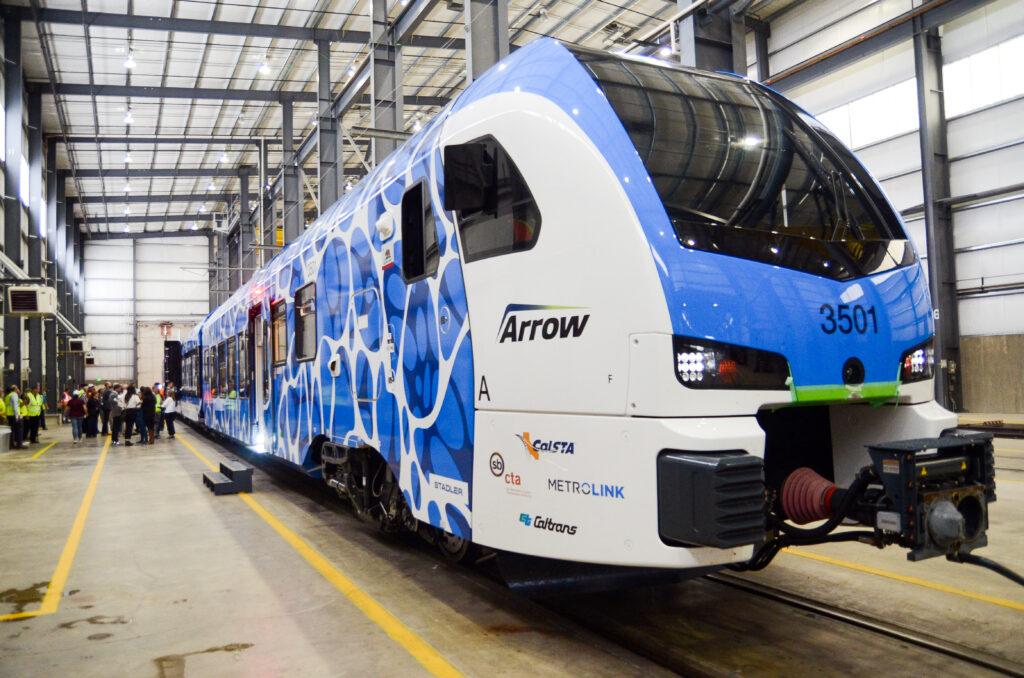
But all the officials in attendance CPR News spoke with were rail fans. Some said they were ready to fly the Front Range rail flag.
“I love the train,” said Rep. Brianna Titone, D-Arvada. “I want to ride the train. I want other people to ride the train.”
The rail project will also likely need to overcome frustration from voters who feel left behind by RTD’s FasTracks, the region’s last high-profile rail transit project. It has since gone billions of dollars over budget and decades behind schedule.
Rep. Jennifer Parenti said she wants to be a believer in Front Range rail. But she represents parts of Longmont, which is still waiting for its FasTracks line. Many of her constituents are skeptical about any promises for rail, she said.
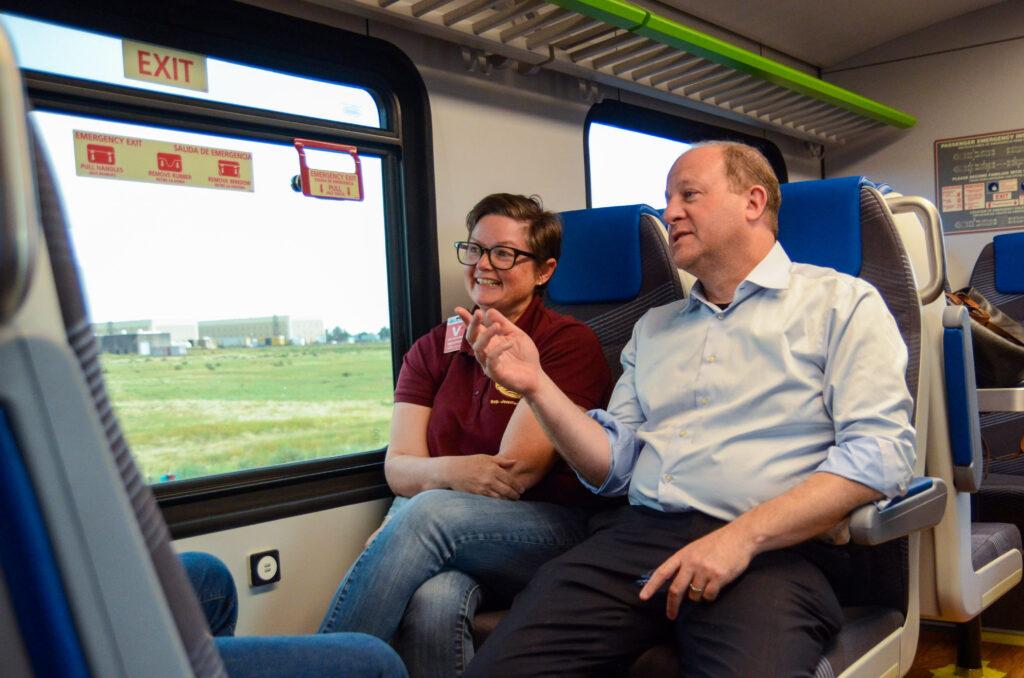
“We have to be mindful of those communities that have perennially disadvantaged by the transportation system and make sure that we’re getting those services out to communities who really need them,” she said.
Her decision to support a ballot measure to fund the train project will rest on whether planners convince her they’re ready, she said. Rail planners are currently working on a “service development plan” that will set a proposed final route, station areas, frequencies, and other issues that will determine timelines and cost estimates. It’s also considered a key step to receiving federal funding and will help inform a ballot measure, too.
“If it’s not ready for prime time, there’s no reason to put it in front of the voters,” Parenti said. “Let’s make sure we have a good plan in place.”
The Front Range rail project could have one key advantage over RTD and its unfinished FasTracks rail line to Boulder and Longmont: Amtrak.
RTD’s Boulder train has been delayed by decades, partially because track owner BNSF Railway quoted a lease price much higher than planners were able to pay.
Front Range rail planners, on the other hand, may hire Amtrak to operate the line. And Amtrak, under federal law, has a guaranteed right to access freight lines owned by companies like BNSF, said John Putnam, a former U.S. Department of Transportation lawyer and new senior advisor at the Colorado Department of Transportation.
“To the extent that there is a partnership with Amtrak, that could be a benefit, Putnam said.”
The new passenger rail line would likely use freight tracks owned by both Union Pacific and BNSF Railway. Both have been “great partners” so far, said Jim Souby, chair of the rail district’s board.
“I’m elated about everything,” he said as the train skimmed across the high desert. “Everything's coming together. I’ve worked on this for a long time and we never had an opportunity like this before.”

